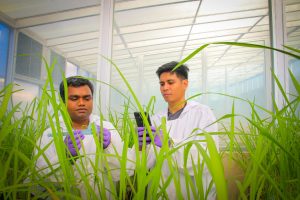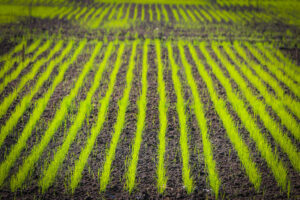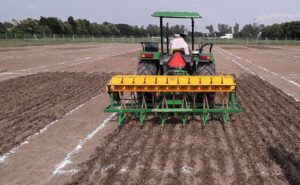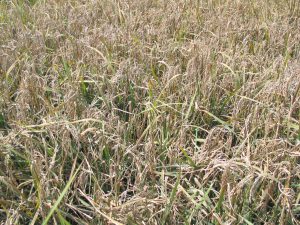Over the past 4 decades, rice research has achieved substantial progress in developing genetically improved rice varieties and more efficient management of natural resources and inputs (fertilizer, pesticides, new seeds and labor). These advances have helped farmers increase productivity and decrease production costs, as well as reduce the crop maturity period, thereby releasing land to grow another crop during the year. Rice is the principal agricultural crop in most Asian countries, often accounting for more than half of total cropped area, so improved technologies can have an enormous impact — potentially more than doubling rice yields and farm profits, and reducing the unit cost of production by 25%, compared to traditional rice varieties. But to what extent do such improved technologies really benefit the poor?
In the early 1970s, many social scientists argued that the new technologies, which sparked the Green Revolution, would bypass small-scale farmers who would be unable to afford the necessary irrigation, drainage and inputs. But, inspired by the improved yields and profitability offered by the new technologies, both governments and farmers increased investment in irrigation infrastructure. Larger farmers adopted the new systems fi rst, but small-scale farmers soon caught up. Access to irrigation and well-drained land are the major determinants for adoption of improved rice varieties. Socioeconomic factors such as farm size and lack of access to institutional credit have not proved to be major constraints. By the 1990s, improved varieties had extended to almost 70% of rice area.
The most important factor limiting the contribution of improved rice technologies to poverty reduction in Asia is scarcity of land and small farm sizes. Over two-thirds of farm households in Asia cultivate less than 1 hectare, which is insufficient to generate an income above poverty level, even with improved technology.
One-third to one-half of rural households in developing Asia are landless and these depend on agricultural labor and nonfarm activities (such as transport operation and construction) for their livelihood. They do not gain directly from improved technologies and better land productivity, but they benefit from consequently cheaper rice— equivalent to higher real income and purchasing capacity, given that the poorest of the poor spend a large proportion of their money on food in general and, in Asia, rice in particular. And the reduced unit cost of food production means that lower prices don’t cut profits for small-scale farmers. Decline in the real (inflation-adjusted) price of rice is the main factor behind the moderate progress in poverty alleviation seen over the past 3 decades.
But technological progress is running out of steam for irrigated rice ecosystems and, with water becoming increasingly scarce, there is little scope for expanding irrigated areas.
The potential for sustaining growth in irrigated rice production is limited unless researchers can further increase the yield potential of irrigated varieties or improve water-use such that irrigated area can expand.
There is still some scope for increasing production in rainfed environments, where the yield is currently low. Rainfed ecosystems account for just over half of Asia’s rice land and scientists are developing new rainfed varieties that can reduce the gap between achieved and potential yields. Keeping rice affordable for the poor — and consequent progress in poverty reduction — therefore depends on technological advances.
Growth in productivity, income and savings catalyzed by technological progress allows rural households to invest in children’s education and nonfarm business, thereby spurring growth of the rural nonfarm economy. Ultimately, this process leads to a decline in agriculture’s share of the rural and national economies. Such growth must go hand-in-hand with the development of rural infrastructure such as roads and electrification — without this, educated people tend to migrate to urban areas or abroad for better income-earning opportunities, draining rural areas of vital entrepreneurial skills.
Agriculture’s role in poverty alleviation depends partly on the state of development of the economy. At low levels of economic development, where food production is a major source of employment and incomes, improved agricultural productivity has a substantial direct effect on poverty reduction, but this declines with economic prosperity. At the middle stage of development, diversification out of staple food and movement into nonfarm economic activities become important sources of rural income growth. But it is the increase in productivity of staple food crops — predominantly rice in Asia — that triggers economic growth and clears the path to prosperity.
_________________________________________
Mahabub Hossain is the head of IRRI Social Sciences Division.










